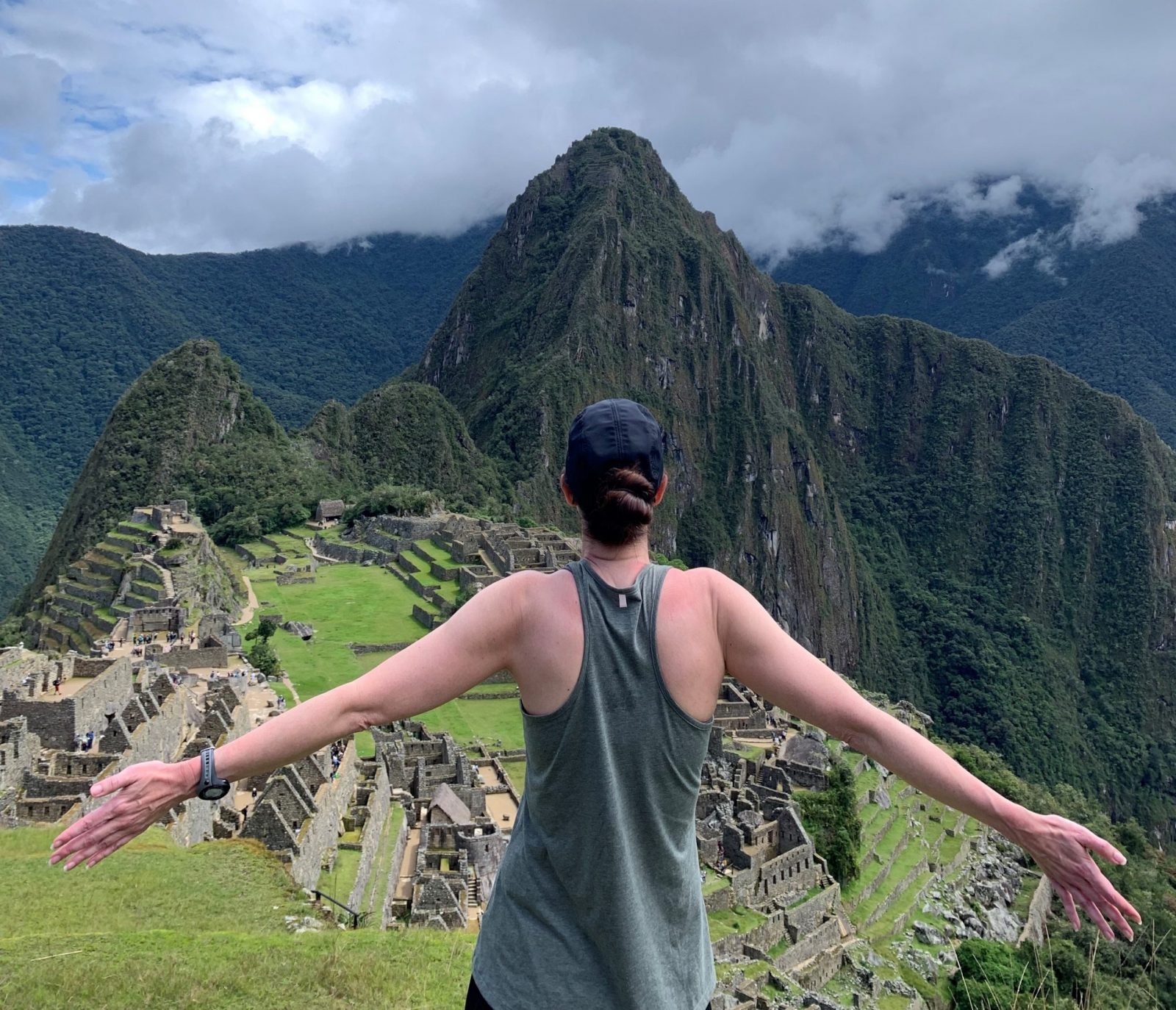When I was asked if I would be interested in going to Peru, without hesitation I said yes. I had never been to South America, let alone Peru, and visiting Machu Picchu had always been a dream of mine (so much so that old passwords of mine even had a variation of “Machu Picchu” in them). Now it would all become a reality, including one activity I’d never imagined myself doing before.
Most itineraries have travelers heading directly to Machu Picchu via train and disembarking in the town of Aguas Calientes. However, my colleague Kyndall and I were offered the opportunity to hop off the train at Kilometer 104 (a stop on the train just shy of Machu Picchu) and hike along the final portion of the iconic Inca Trail to the citadel.
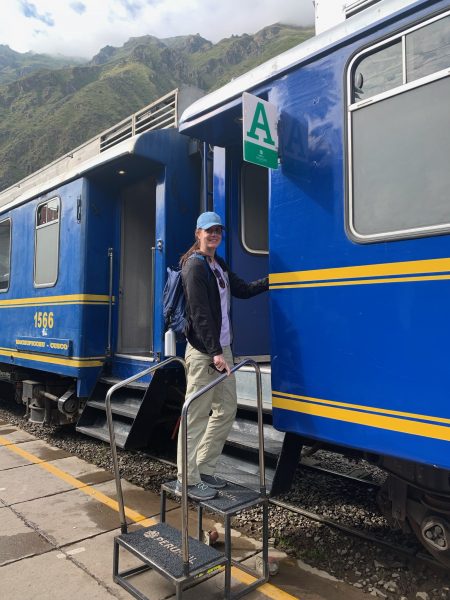
Our day began at 7am when we checked out of our hotel in the Sacred Valley. Our driver Guido brought us, and our guide, Juan Carlos to the train station in Ollantaytambo. We’d packed a small overnight bag the night prior, which would be picked up by our hotel in Aguas Calientes, so we wouldn’t have to hike with it. Our remaining luggage was then driven to our next hotel in Cusco where we’d be reunited upon our arrival the following night.
At around 8:20am Kyndall, Juan Carlos, and I boarded the Vistadome train headed for Machu Picchu. The train name is an accurate description of its framework, as it boasts a dome shaped roof with windows that provide additional visual access to the surroundings. During the one hour and 15-minute journey, we enjoyed beautiful views of the Urubamba River, the mountains and the traditional Andean villages that inhabit the route. The Andean Spectacle Bear can sometimes be seen along the banks of the river; however, we had no such luck along our journey.

Eventually, we heard the announcement that it was time for all passengers disembarking at KM 104 to hop off. So, we bid farewell to our overnight bags and the three of us set out to begin our 8-mile (roughly 6-hour) hike along the Inca Trail toward Machu Picchu. We first had to cross the river via a suspension bridge to a checkpoint where we showed our passports to the National Reserve rangers. We loaded up on sunscreen and bug repellant, and used the last Western bathroom facilities we would see until we reached the end.
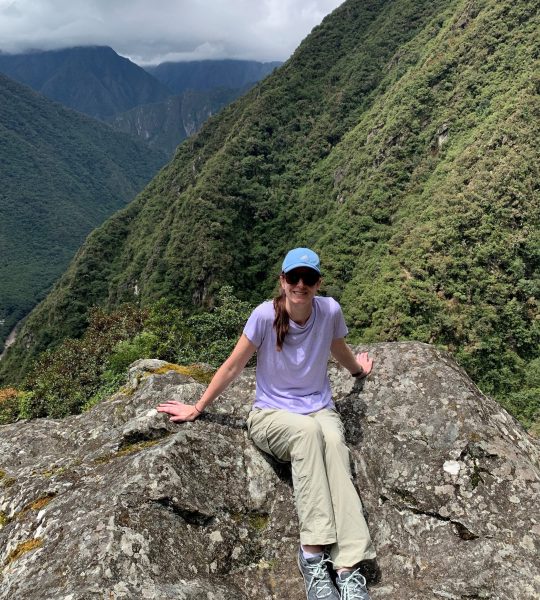
From here, the real adventure began. Juan Carlos explained that the first half of our hike would be predominantly (90% or so) uphill, in the form of both stone steps and gradual incline. About this, he was entirely accurate! Being a runner and having had no previous issues with altitude sickness, I didn’t have too many problems with this stretch. There were definitely times my heart rate increased, but for the most part, our slow pace ensured we were enjoying the beauty along the way. Kyndall and I took some breaks to refuel with water and snacks; and during all the ups and downs of the trail, our guide pointed out the various flora on the route. Passing by a cascading waterfall, we also made sure to take a stop for a photo opportunity.
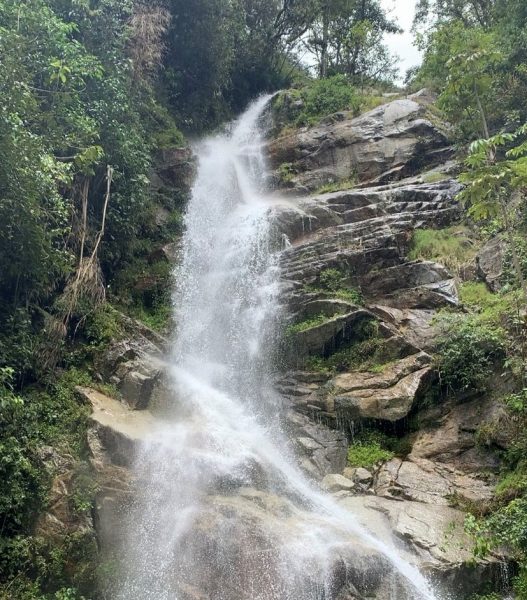
As we continued, we reached the archeological site of Winaywayna, which in the Quechuan language means “forever young.” Making our way along the site’s agricultural terraces, we had to climb another stone stairway, but the views of the farmland and the Urubamba River below made the visit worth the extra exertion. Plus, it hopefully meant we were keeping ourselves “forever young” (although we may not have felt it at the time).
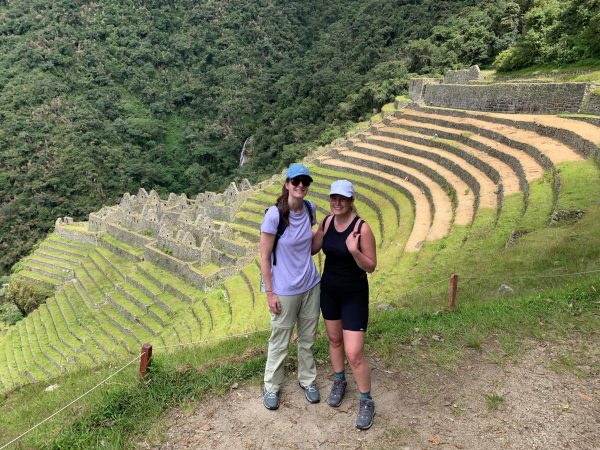
Once we reached the halfway point, we stopped to eat our packed lunches and Juan Carlos informed us that we had made it through the toughest part. The remainder of the journey would be what he called “Peruvian Flat.” I quickly came to learn what that meant: the rest of our route was to be gradual up and downs rather than the significant incline we had experienced on the first half. During the entire adventure, we encountered various types of trails, from natural dirt to stone steps, including what Juan Carlos dubbed the “Gringo Killers,” a particularly steep staircase we had to climb about one kilometer before arriving at the Sun Gate at Machu Picchu.
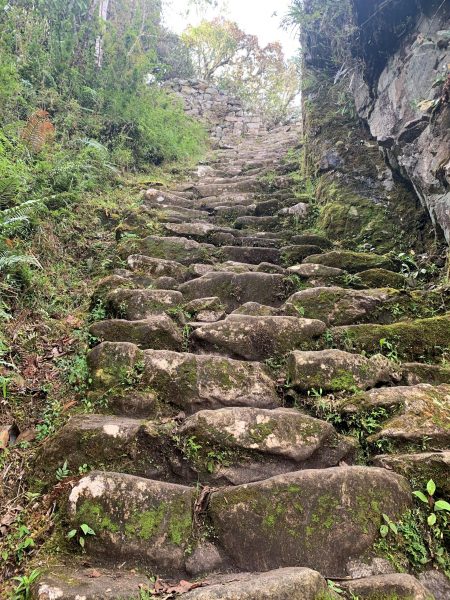
Having conquered the stairs, and looking ahead on the trail, I could see other trekkers almost reaching our end point; so, I took out my phone and started videoing as I reached this phenomenal overlook of Machu Picchu. To see the UNESCO World Heritage site below was pure magic. It was such an impressive and memorable point to reach; we even witnessed a marriage proposal taking place! I can’t imagine the nerves the soon-to-be groom must’ve been experiencing all the way up the trail.
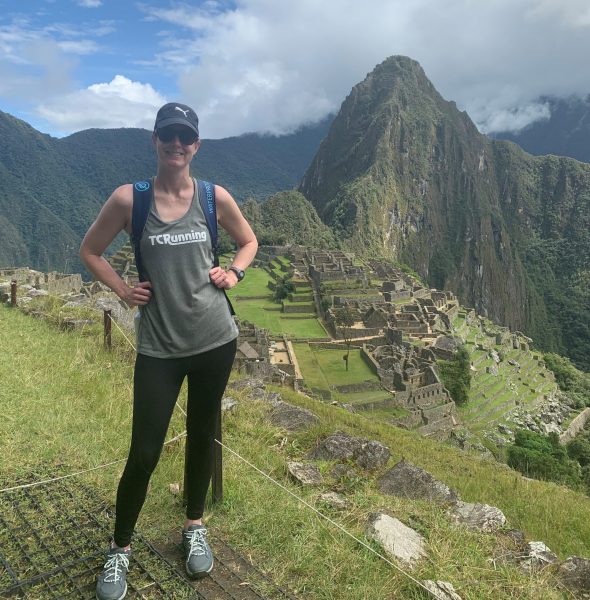
After arriving at the Sun Gate around 3pm, and taking many photos, we descended down towards the ruins. It took about an hour to reach the Citadel, where we proceeded to take all of the quintessential Machu Picchu photos. We then made our way to the bus for the 25-minute winding ride down to Aguas Calientes, where we spent the night at the Inkaterra Machu Picchu Pueblo Hotel. The town itself is quite lovely and very walkable, the only traffic being the busses to and from the entrance to Machu Picchu.

Upon arrival at the hotel, we soaked our feet in our suite’s small plunge pool to refresh them in preparation for our second visit to Machu Picchu the following day. While we stuck to the main paths, though there are many optional hikes around the Citadel including Wayna Picchu and Machu Picchu Pueblo Mountain. Both of these hikes require permits and are more rigorous. There’s also an easy walk to the Inca Bridge, for which no permit is necessary. Having had a 6-hour hike the previous day, we opted to simply explore the ruins of the Citadel as Juan Carlos educated us on the history of this iconic Inca Civilization.
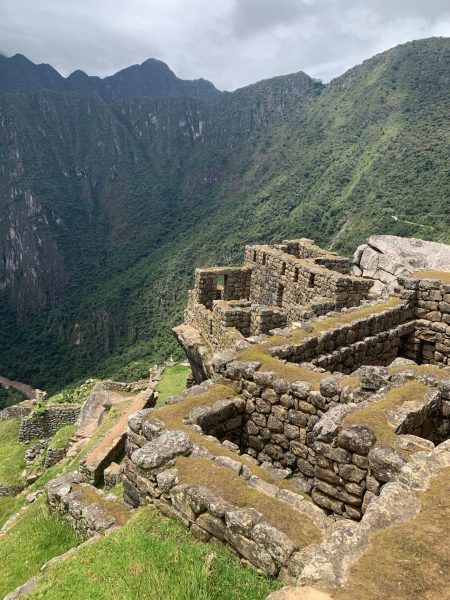
Wrapping up our time at Machu Picchu, we made our way back down the winding road to Aguas Calientes. We collected our overnight bags from our hotel and went to the train station to board our train back to the Sacred Valley. Upon arrival in Ollantaytambo, we were met once gain by our driver Guido who drove us back to Cusco and to our hotel, Inkaterra La Casona. Our main luggage was already waiting for us in our room.
As I reflected on the previous two days, I was so thankful that we opted to stop at KM 104 and hike to Machu Picchu. Aside from the trail being beautiful, I also enjoyed being away from the crowds. We only saw a handful of trekkers, because Peru only offers 250 permits per day for the KM 104 stop (and 500 if doing the 4-day hike). Once you get to Machu Picchu, you are instantly aware you are at an attraction that draws tourists, so I appreciated the peaceful and less inundated experience of the hike.
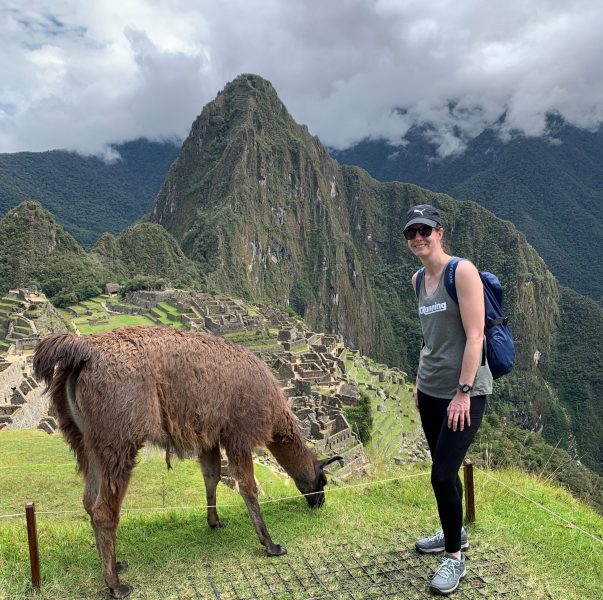
The excursion also gives you a sense of accomplishment. There’s nothing quite like the feeling you experience when you reach the Sun Gate and experience that unique view of Machu Picchu below. I was in complete awe, and I highly recommend the hike to those who are both interested and able. It sure makes for an unforgettable experience!
